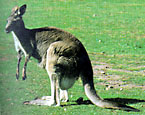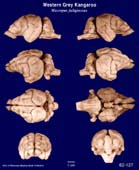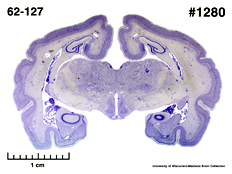|
Western
Grey Kangaroo
(Macropus fuliginosus) #62-127 |
||||
|
|
Physical
characteristics and distribution
|
|
Head and body length of M. fuliginosus is 0.9-1.4m with tail lengths of 75-100cm. Weights range from 15-54kg with adult males reaching twice the size of adult females. M. fulginosus is one of the largest and most abundant kangaroos. It has thick, coarse fur with color variations from pale gray to chocolate brown. The chest and belly are paler. Western
grey kangaroos are capable of using several different types
of habitats. They can be found in woodlands, open forests, coastal
heathland, and open grassland areas. Western Grey Kangaroos eat grasses, forbs, leaves, tree bark, and shrubby browse. They use microorganisms in an organ called the cecum to digest the cellulose of plants. This kangaroo requires very little water and is able to survive on plants high in fiber. Western grey kangaroos spend between 6 and 10 hours grazing per day, mostly at dawn and dusk. They are found in SW New South Wales, NW Victoria, South Australia, SW Western Australia, Tasmania, King Isl, and Kangaroo Isl (Australia).
|
|
Description
of the brain
|
|
Animal
source and preparation
|
|
All
specimens collected followed the same preparation
and histological procedure.
|
Other Related Resources (websites and publications)



